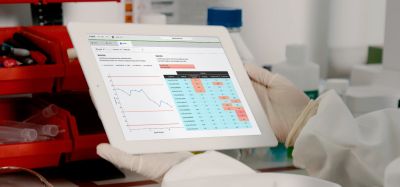A consistent focus on customers and their challenges
Posted: 15 January 2018 | Tiffani Manolis - Agilent Technologies | No comments yet
Tiffani Manolis, Director, Global Pharma Segment Marketing, Agilent Technologies, explains how her company’s solutions and portfolio have evolved with the pharma industry.
What changes do you believe have had the biggest impact on the pharma and biopharma market over the past 21 years?
In my opinion, over the past 21 years the change with the biggest impact on the pharma and biopharma market is the diversification of drug treatments. For instance, acquisitions of biotech organisations into traditional small molecule pharma companies have changed the landscape of the industry as well as advanced therapeutic approaches to disease treatment.
In addition, increased political and consumer focus on drug prices and risks have also incentivised pharma companies to continue to optimise manufacturing efficiency as our populations age worldwide, providing a larger buying pool and the opportunity to control demand through centralised government healthcare programmes. Compounding the price pressures are the rising costs of bringing drugs to market, currently averaging at approximately $1.5bn per drug.
[insert_php] if ( zmember_valid_subscription() ) { echo ‘
DOWNLOAD THE ENTIRE 21st ANNIVERSARY SUPPLEMENT NOW
‘ ; } else { echo ‘
‘; } [/insert_php]
How has Agilent adapted to these changes?
Agilent has maintained a consistent focus on customers and their challenges. Thus, Agilent’s solutions and portfolio have evolved with the pharma industry over the past 20 years in three main areas:
1. Agilent has expanded the portfolio of products and solutions for pharma customers. Focusing on developing products to improve efficiency, reproducibility, and robustness, Agilent’s portfolio of products assists pharma customers in optimising applications in their labs
2. Agilent has focused on expansion in biopharma. We have expanded our complete sample-to-answer solutions for large molecules through solution development and strategic acquisitions
3. Agilent is committed to key partnerships. Strategic collaborations with academic and pharma customers allow us to co-develop solutions that respond to analytical challenges, enabling customers to use analytical technologies earlier in the drug development process.
Regarding Agilent’s continuous growth and acquisitions, how have recent mergers such as Cobalt light systems and iLab solutions changed things? Do you see more mergers?
As the pharma industry evolves, Agilent will continue to provide our customers with innovations built to meet their needs. Cobalt Light Systems and iLab solutions are strategic additions that allow Agilent to not only expand its position through the acquisition of a new technology into the Pharma portfolio, but also to increase Agilent’s reputation in pharma manufacturing and QA/QC.
Looking ahead to the next few years, what industry challenges Tiffani Manolis, Director, Global Pharma Segment Marketing, Agilent Technologies do you foresee and how do you believe Agilent will tackle them?
The challenges to the pharma industry are numerous and varied. I believe the following are a selection of the key industry challenges:
- One of the greatest, ongoing challenges the industry faces is speeding up drug selection. The only way this can be achieved is by optimising all areas of drug development, and meeting the high demand for instrument innovation in this area. The industry will continue to demand technologies that will assist in optimising all areas of the drug development process to accelerate drug selection
- Additionally, pharma manufacturing must evolve to incorporate technologies to improve risk prediction, consistency, and controls. For example, process analytical technologies will continue to develop and enable batch to continuous manufacturing processes and lean manufacturing
- Pipeline regeneration will influence further consolidation in the pharma industry. Agilent collaborations and partnerships are poised to innovate for these challenges.
Agilent is committed to advancing analytical technologies to ensure that pharma companies have the best tools to meet the demands of their business for the long term.
Longer term, what do you think are likely to be the main opportunities and challenges affecting the pharma and biopharma industry?
As mentioned earlier, a recent study published by Deloitte cited drug development costs in pharma to currently be $1.5bn per drug on average. Long term, the industry must find ways to balance development costs. With the decline of the blockbuster drug opportunities, pharma must optimise the drug development costs to ensure accessibility for patients.
Additionally, as globalisation continues and borders become more porous between countries, regulatory agencies will bridge boundaries to ensure safe treatments for all patients worldwide. Globalisation provides regulatory agencies an opportunity to harmonise regulatory standards and drug products increasing drug efficacy and patient health.
If there was one thing you could change within the sector, knowing what has happened in the past 21 years what would that be?
While there have been significant treatment advances, holistic approaches to health are key to prevent disease. Wearable technologies and their accessibility, are raising the awareness of the importance of health and allowing us to do more, to ensure that we are eating well, exercising, and living mindfully. We can never prevent too early, and if we could rewind the clock, where would we be now if we had these technologies 21 years ago?









